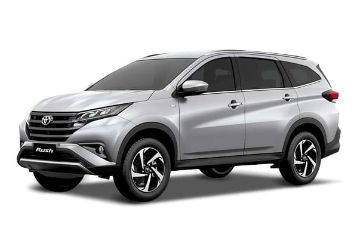Made for the daily commute
![FIRST-DRIVE REVIEW: Wuling Mini EV Macaron Edition -- expertly crafted or half-baked? 01]()
Powering this microcar is a 27 PS, 110 Nm electric motor connected to either a 13.8 kW-h or a 26.5 kW-h battery pack.
Yes, tiny numbers, but it’s a tiny car anyway, so motivating it doesn’t require much.
Acceleration isn’t amazing, but it does decently enough in stop-and-start traffic, where the electric vehicle thrives.
That doesn’t mean this thing can’t hack it on the open road, as the alleged top speed is 100 km/h
– a decent turn of pace given the car’s miniscule power output.
Something worth noting, however, is that the car’s performance is affected quite drastically by the road’s incline – anything steeper than a 30-percent incline will have you crawl to a stop.
Another issue: braking. The tiny brakes, along with the small wheels and tires, don’t inspire confidence. Mentally, it requires more foresight.
It can still do an emergency braking maneuver, but only in the direst circumstances.
As for range, the Wuling Mini EV comes in with 300 km of range for the Gameboy Edition or just 170 km for the Macaron Edition. This is identical to another electric city car we tested a few weeks ago.
In fact, the Chery QQ Ice Cream Sundae has many things in common with the Wuling Mini EV, primarily because the Chery was built to compete with it.
Imitation is the highest form of flattery, as they say – not that China’s best-selling electric vehicle (EV) in 2021 and 2022 needs to be told that.
Naturally, rivals like the Chery and even some we’ve never heard of, like the Baojun B300, will start coming out of the woodwork to get some market share for themselves.
An urban cocoon?
![FIRST-DRIVE REVIEW: Wuling Mini EV Macaron Edition -- expertly crafted or half-baked? 02]()
Getting into the Wuling Mini EV is quite the experience and it starts by opening the door.
Proportionally, the door is a huge thing, easily taking up to 80 percent of the car’s length, but that’s because there are only two for humans, with the rear hatch for cargo as the third.
Getting in the front is a doddle, thanks to this, but getting in the back is a chore in itself.
Usually, one lever will bring the seatback forward and unlatch the whole seat so it can slide to the front and allow passengers to get into the back easily – many multi-purpose vehicle owners will be familiar with this motion.
Instead, the Wuling Mini EV requires you to tumble the seatback and then slide the whole seat forward using a different lever, which indicates where Wuling decided to cut some costs.
Once inside, you realize how much Wuling Mini EV expects you to live without amenities – the surprising part is that there weren’t many to begin with.
The dashboard is expectedly simple, given the nature of the vehicle. It has a radio, air-conditioning and power windows, although it is surprisingly missing a touchscreen.
Aside from that, you realize that you actually have everything you need for the daily commute, which makes the simple dashboard quite refreshing.
What's it like on the road?
![FIRST-DRIVE REVIEW: Wuling Mini EV Macaron Edition -- expertly crafted or half-baked? 03]()
Driving the Wuling Mini EV once again pushes the "less is more" tenet further.
Usually, you expect to hear a starter motor and a gasoline engine roar into life, but no – the Wuling just quietly sits there, with the only indication of life being the dashboard lighting up and showing you the instruments.
Once it’s on, the gauge panel shows you a digital bird’s eye view of the car, flanked by a speedometer gauge on one side, a power usage meter and range-to-empty meter on the other, and temperature and battery meters up top – a far departure from the traditional gauge panels with tachometers and fuel gauges.
Stepping on the accelerator sends power to the motor, taking your foot off cuts it and stepping on the brakes lets the anchors out – all textbook motor-vehicle operation.
The suspension became a point of contention for our testing group. During our short test drive along EDSA, we noticed that with a full complement of passengers, the Wuling seemed to be unsettled by small-to-medium-sized bumps, no thanks to the 12-inch wheels and tires.
On smoother roads, we noticed that the ideal occupancy was just two – more than that and the suspension goes from smooth to bouncy fairly quickly.
Overall, the ride quality largely depends on your usage, so use wisely.
And that puts to mind other issues with the Wuling Mini EV, starting with test-driving the car in the first place.
Because the company is only starting out at the moment, viewing and testing the car is by appointment only and setting an appointment can take as long as a week.
It can only be placed on office days, making it challenging to take time out of your schedule.
HM po?
But by far the Wuling's biggest issue is the price.
At ₱683,000 for the Macaron Edition and ₱933,000 for the Gameboy Edition, the Wuling Mini EV seems reasonable, but only against other comparable electric vehicles like the ₱888,000 Chery QQ Ice Cream Sundae or the luxury-car-priced Hyundai IONIQ5 or Kia EV6.
Unfortunately, the Wuling Mini EV is priced in the same region as internal-combustion engine cars with more features, space and no range limitation, such as the Honda Brio.
That high price means that the only consideration that gives the Wuling an advantage is that it’s an electric vehicle, which returns it to the realm of “plaything for the rich and famous.”
Still, the fact that it has indeed found its way to our shores means two things.
One, there is a market for affordable EVs and people have expressed interest in buying one, despite its shortcomings, which bodes well for the market as a whole.
And two, companies are taking notice. After all, companies won’t bring in models without demand unless they see potential in explosive market expansion.
So even if the Wuling Mini EV may have its issues, It can still be considered a resounding success, perhaps not for itself, but for the EV market space as a whole.
What do you think of this story? Rate it now using the five stars below!








